Did you know over 50 million Americans feed birds in their yards during winter? This is because food can be hard to find for birds in cold months. Many people enjoy making their own seed mixes to attract different birds and make their guests’ experience better.
Making your bird food mix saves money and lets you skip unwanted seeds, like milo. Many birds don’t like these. By choosing peanuts, dried fruit, and sunflower seeds, you offer birds a safe and healthy diet.
Turning leftovers into birdseed mixes reduces waste and is a great project. It helps you learn about birds that visit your feeder. This can lead to creating better habitats with native plants. Placing feeders just right and using apps to identify birds can also make feeding birds more fun.
Key Takeaways
- Crafting DIY seed mixes for different bird diets can attract a diverse range of birds.
- Homemade birdseed blends help avoid filler seeds found in commercial mixes.
- Using organic and raw ingredients ensures a safe diet for birds.
- Utilizing leftovers in custom bird food mix promotes sustainability.
- Placing feeders strategically enhances birdwatching experiences.
- Observations from feeders can guide the creation of bird-friendly habitats.
Why Create Your Own Bird Seed Mix?
Making your own bird seed mix has lots of benefits. By mixing seeds for wild birds, you can make food that attracts certain birds. This can make watching birds more fun and varied. Store-bought mixes often have seeds that many birds don’t like. They can also attract pests like rodents.
Creating blends at home is flexible. For instance, a DIY bird seed mix lets you pick what to put in based on what local birds eat. This means less wasted food. It also makes sure the birds get more nutritious meals.
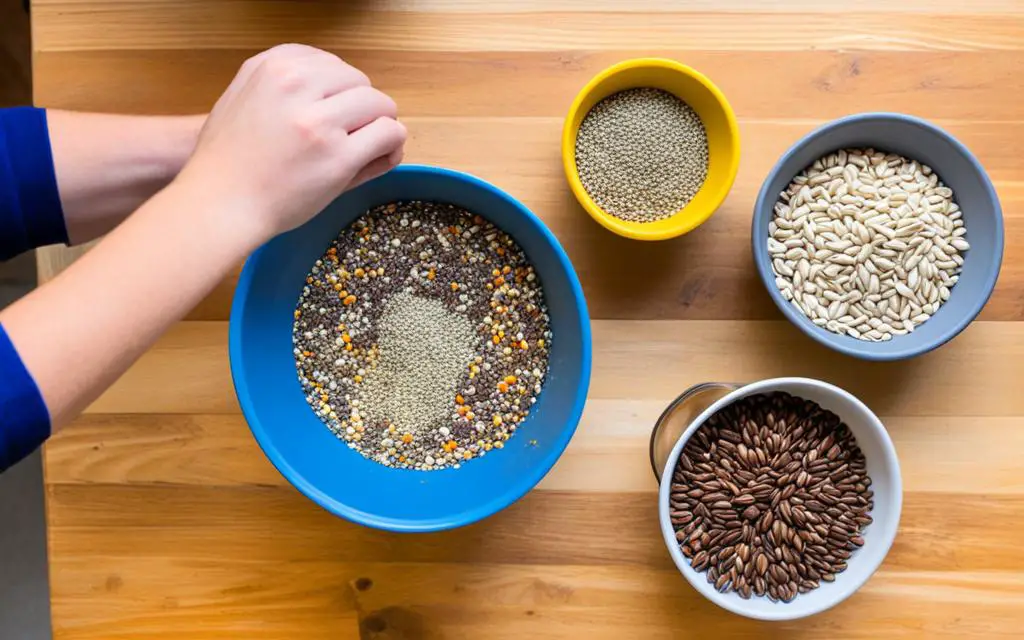
Making crafting bird diet supplements is fun because you can be creative. You’re not stuck with the usual seed mixes. You can add all sorts of seeds, nuts, and dried fruits. This might help you find new foods that your backyard birds love.
One of the best things about making your bird seed mix is how rewarding it feels. Feeding birds isn’t just about giving them food. It’s a way to watch and connect with nature. With some creativity, you can keep improving your mixes. This helps match the changing tastes and needs of your local birds.
| Advantages | Store Mix | DIY Mix |
|---|---|---|
| Customization | Limited | Highly Customizable |
| Filler Seeds | Common | Avoidable |
| Cost | Higher Over Time | Lower Over Time |
In conclusion, bird feeding innovations with homemade mixes are great. They make feeding birds cheaper and more fun. You’ll see the good impact of giving birds high-quality, special food. Plus, your backyard will stay a fun place for your bird buddies.
Essential Ingredients for Homemade Bird Seed Mixes
To make a great birdseed mix, choose the best seeds for different birds. This creates a healthy, tasty blend for your bird friends.
Black Oil Sunflower Seeds
Black oil sunflower seeds are a must-have for your birdseed recipe. They’re loved by many birds because they’re full of fat and protein. Birds like cardinals, woodpeckers, and chickadees enjoy them, making them key for your mix.
Niger/Thistle Seeds
Nyjer seeds, or thistle seeds, attract finches, especially goldfinches and siskins. They’re packed with fat which is great for small birds in the cold.
White Proso Millet
White proso millet is popular with ground-feeders like sparrows, doves, and juncos. It’s small and easy for these birds to eat. Plus, there’s no waste because the birds eat it all.
Cracked Corn
Cracked corn is good for birds like quails, doves, and pheasants. It offers them important carbohydrates. Adding it to your mix brings more kinds of birds.
Safflower Seeds
Safflower seeds keep away squirrels and unwanted birds. But, they draw in cardinals, grosbeaks, and chickadees. These seeds are high in protein, making them a great choice for your mix.
| Seed Type | Birds Attracted |
|---|---|
| Black Oil Sunflower Seeds (See Amazon Price) | Cardinals, Woodpeckers, Chickadees |
| Niger/Thistle Seeds | Goldfinches, Siskins |
| White Proso Millet | Sparrows, Doves, Juncos |
| Cracked Corn | Quails, Doves, Pheasants |
| Safflower Seeds | Cardinals, Grosbeaks, Chickadees |
Use these key ingredients to make a great birdseed mix. It will attract many kinds of birds. Your feeder will be a busy spot for all your bird friends.
DIY Seed Mixes for Different Bird Diets
Making your own seed mixes can really help the birds in your backyard. By knowing what each bird likes to eat, you can make special mixes for them. This makes your backyard a great place for birdwatching.
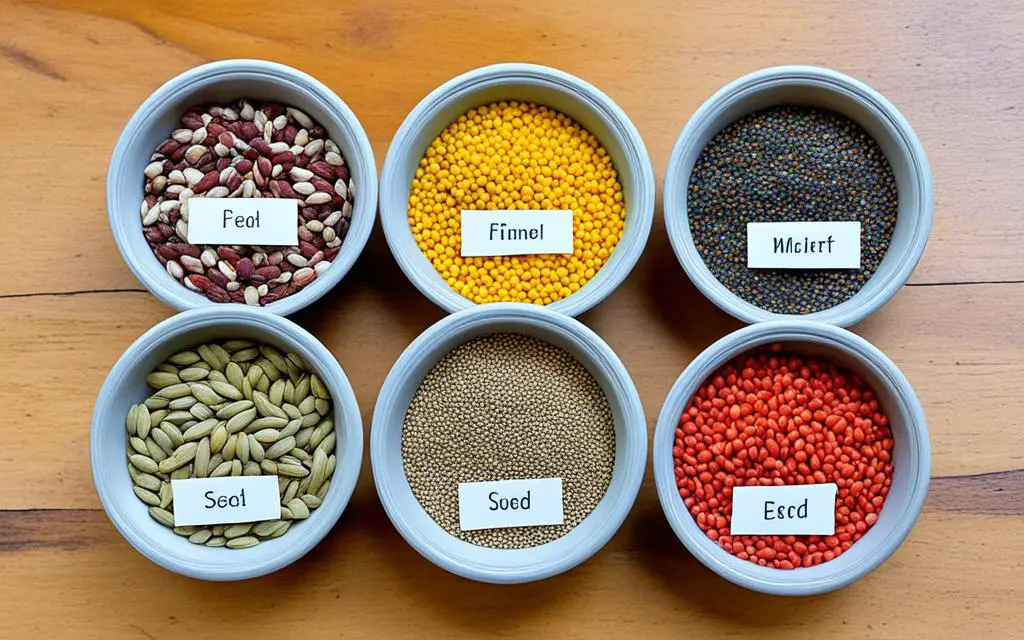
Finches love small seeds like nyjer because they’re easy for them to eat. Sparrows, however, prefer white proso millet. It’s great for birds that eat off the ground. Offering this helps sparrows find the food they need.
Cardinals need bigger seeds, and they love black oil sunflower seeds. These seeds keep cardinals coming back for more. By having different seeds, you can see many colorful birds. This makes your backyard a lively place.
Making the right seed mixes can bring lots of different birds to your yard. You can see finches, sparrows, cardinals, and more. Use what you know to mix seeds that birds will love. This makes birdwatching at home really fun.
Avoiding Filler Seeds
It’s key to avoid filler seeds to make a good birdseed mix. This attracts the right birds to your yard and cuts down on waste.
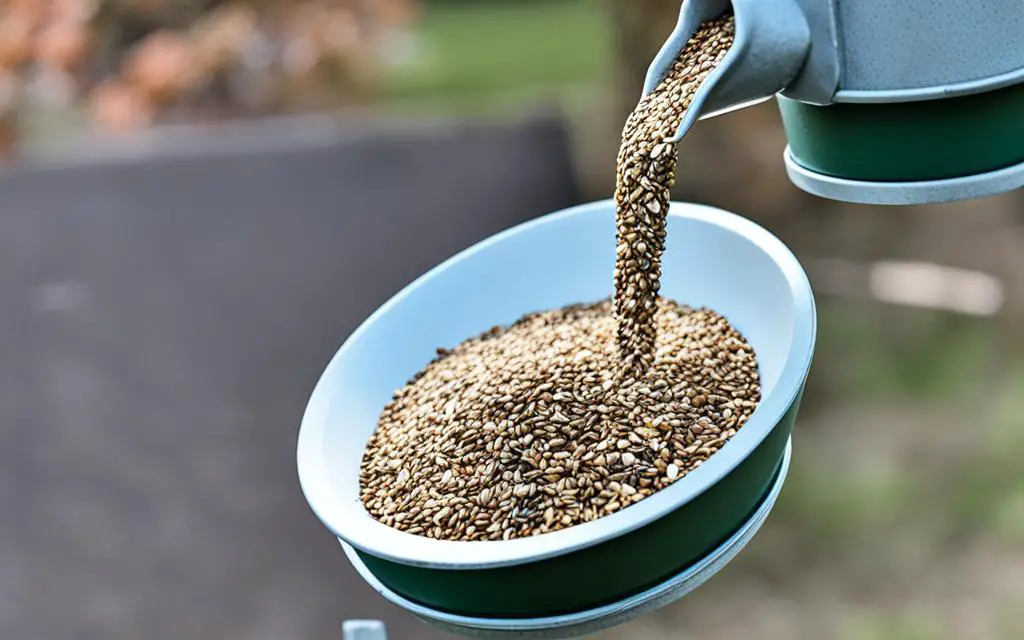
Types of Filler Seeds
Cheap mixes often have fillers like milo, red millet, and grains. Birds usually don’t eat these, causing a mess and attracting pests.
Impact of Filler Seeds
Using fillers leads to leftover seeds on the ground. This draws rodents and pests. But, good seeds like sunflower seeds keep birds happy and reduce waste.
Identifying Quality Seeds
To feed birds well, choose quality seeds. Look for black oil sunflower seeds, nyjer seeds, and white proso millet. Birds love these and they provide much-needed nutrition without the negatives of filler seeds.
Benefits of Buying Seed in Bulk
Buying birdseed in bulk has many perks for bird lovers. You can save a lot on birdseed cost savings. It also means you always have enough nutritious food for your birds.
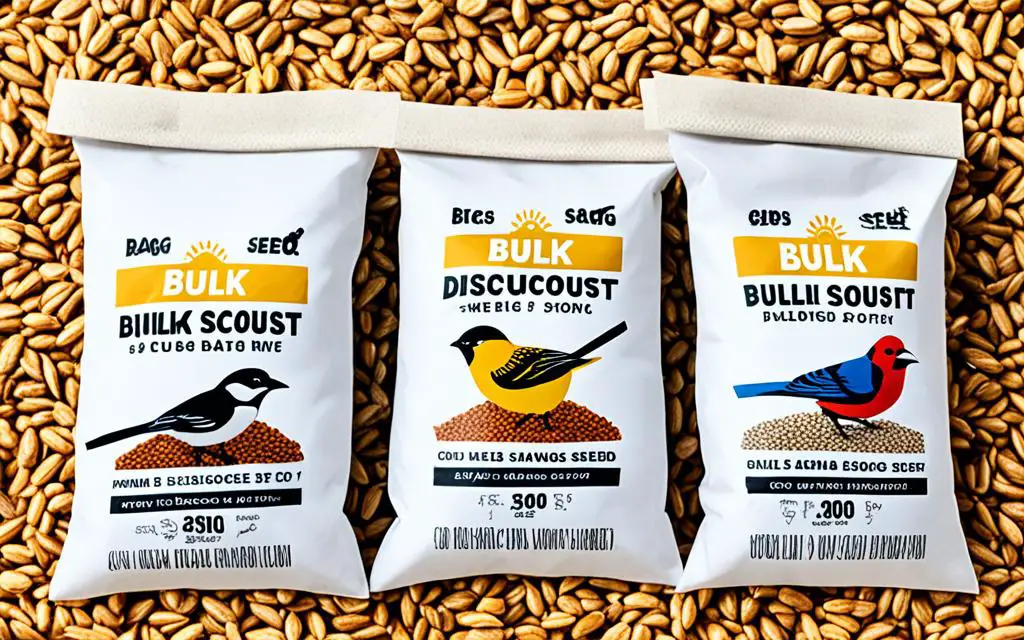
When you choose bulk organic birdseed, you’re picking a healthier option for your birds. Such options avoid harmful chemicals. This makes watching birds more natural and enjoyable. Plus, buying in big amounts means you’re always stocked up, making life easier and keeping your feeders full.
Here’s a quick look at why bulk birdseed is a smart choice compared to small buys:
| Aspect | Bulk Purchase | Frequent Small Purchases |
|---|---|---|
| Cost | Lower per pound | Higher per pound |
| Convenience | Less frequent shopping | More trips to the store |
| Quality Control | Easier to ensure high-quality, organic birdseed | Varies per purchase |
| Environmental Impact | Reduces packaging waste | Increased packaging waste |
| Stock Management | Always have bird feeder supplies ready | Risk of running out |
Buying in bulk is smart for all birdwatchers. The birdseed cost savings and having lots of food available are big pluses. It’s also a healthy choice, providing your birds with chemical-free food.
Best Storage Practices for Bird Seed
Storing birdseed right is key to keep it fresh and nutritious. For lots of seeds, store them in a cool, dry spot. Use airtight birdseed containers to keep seeds dry and pest-free.
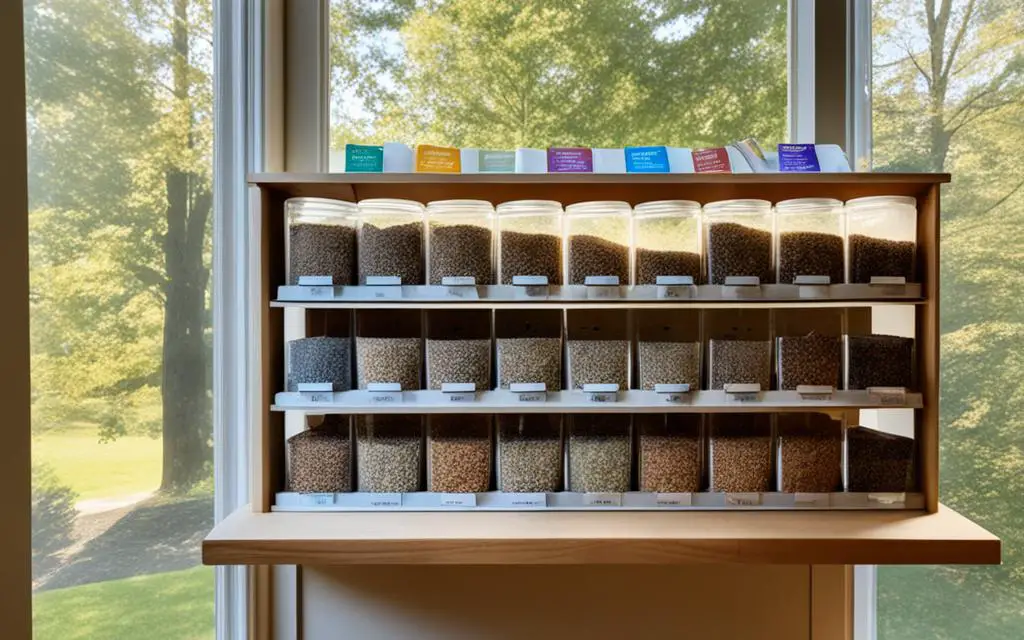
It’s also critical to watch the birdseed expiration dates. Bad seeds can harm birds. So, always check your seeds.
Here is a useful comparison of storage options:
| Storage Option | Advantages | Disadvantages |
|---|---|---|
| Airtight Containers | Prevents moisture and pests, preserves freshness | Can be more expensive |
| Plastic Bins | Economical, easy to find | Less effective at sealing out moisture |
| Metal Containers | Durable, keeps pests out | Potential for rusting, heavier |
Using these storage tips means your birdseed stays nutritious and safe all year. Good birdseed storage saves money and effort, keeping backyard birds healthy and happy.
Custom Bird Food Mix Recipes
Creating custom bird food mixes meets specific needs of backyard birds. With safe, nutritious items, you attract different bird types. They’ll keep coming back.
General All-Purpose Blend
The general all-purpose blend fits most backyard birds. It has birdseed recipe, black oil sunflower seeds, white proso millet, and some safflower seeds. Many birds love these, making it great for feeders.
Finch and Small Bird Mix
Finches and small birds like easy-to-eat seeds. Use nyjer seeds, chopped sunflower kernels, and dried fruit for birds. It gives them needed energy and nutrients, cutting down waste.
Blue Jay Food Mix
Blue Jays prefer big, hearty seeds. Mix shelled sunflower seeds, corn, and shelled peanuts for birds. Add dried fruit to attract more birds that like these treats.
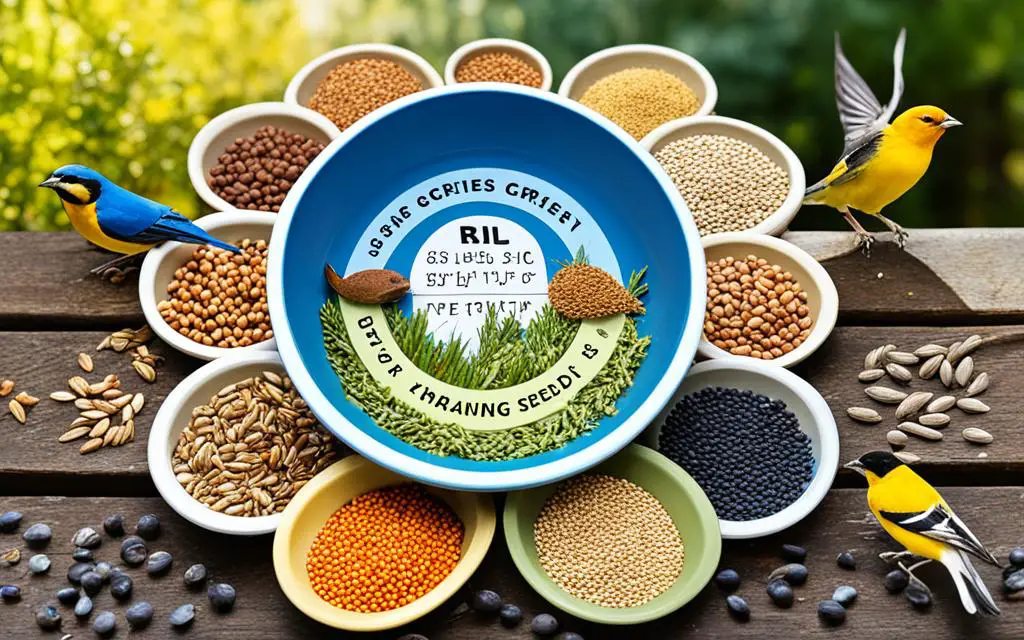
Suet Mix for Clinging Birds
Clinging birds, like woodpeckers and nuthatches, enjoy suet mixes. Use rendered suet, seeds, chopped nuts, and mealworms for birds. This high-energy food helps during winter months when food is rare.
Try different recipes and change them based on what your backyard birds like. This way, you create a diverse, satisfying menu for them.
Creating Fun and Engaging Seed Shapes
Making your own bird feed shapes is fun. You can use birdseed molds or cookie cutters. It’s a great way to make your garden look interesting and spend quality time with your family.
Ornament Shapes
Use birdseed molds for making ornament shapes to decorate your garden. It’s a fun way to feed the birds. These ornament shapes are great for making your yard look special.
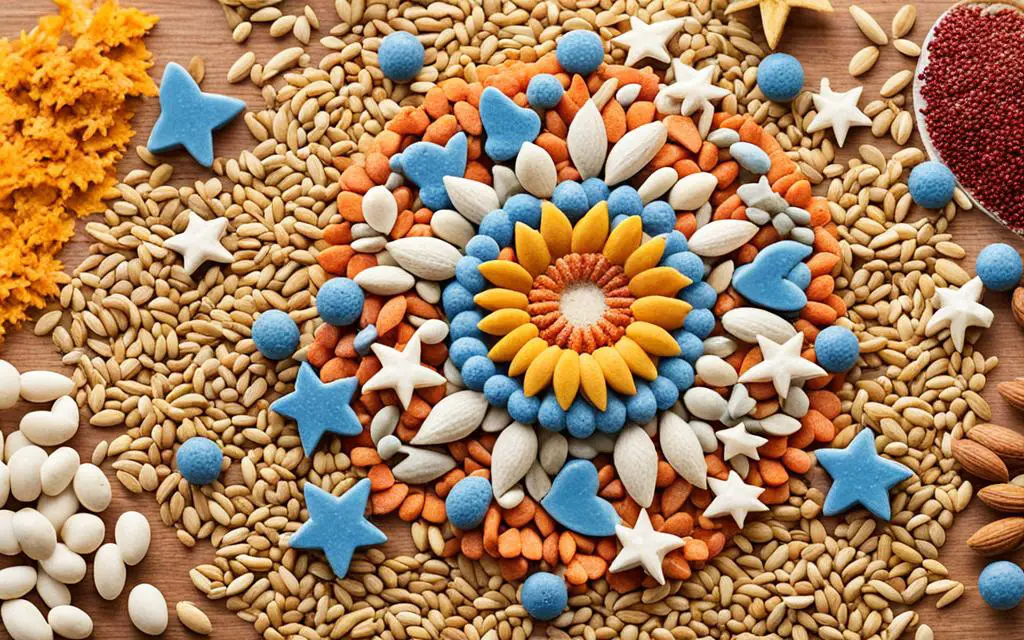
Incorporating Fruit and Nut Mixes
Adding fruit and nut mixes helps attract different birds like woodpeckers and waxwings. Use dried fruits and shelled peanuts to make the shapes more tempting. Always clean bird feeders regularly and choose squirrel-proof options to avoid pests.
Common Mistakes to Avoid
Many love watching birds but sometimes make mistakes that hurt them. A big error is using bad seed mixes. These mixes have seeds birds don’t eat, leading to waste and attracting rodents. So, always choose top-quality seeds that don’t have fillers.
Not cleaning bird feeders is another mistake. Dirty feeders can grow mold and bacteria, which is dangerous for birds. Clean your feeders often to keep birds safe. Also, offering different types of food is important. This way, you can feed many bird species. Add seeds like sunflower, nyjer, and millet to welcome more birds.
| Common Mistake | Consequence | Solution |
|---|---|---|
| Using filler seeds | Waste and rodent attraction | Choose high-quality seeds without fillers |
| Not cleaning feeders | Health risks to birds | Regularly clean feeders |
| Lack of food variety | Limited bird species visiting | Include diverse seed types like sunflower, nyjer, and millet |
Finally, make sure your feeders are safe from squirrels. Squirrels eat a lot of birdseed and keep birds away. By fixing these common errors, you can help your bird friends thrive. This means they’ll be well-fed and healthy.
Conclusion
Making your own seed mixes for birds helps you connect more with nature. It lets you meet the specific needs of different birds. This makes feeding them more successful and fun. Choosing the best ingredients avoids useless fillers. This way, your birds get great nutrition.
Feeding birds thoughtfully can turn your yard into a lively place. You will see many kinds of birds. Watching them is fun and interesting. Plus, by watching what birds like your food, you can make your mixes even better. This helps all birds feel welcome.
Trying new ways to feed birds keeps birdwatching exciting. It’s fun whether you’re starting or have loved birds for years. Making your own bird food is rewarding. It’s a way to give back to nature that feels good.
FAQ
Why should I make my own bird seed mix?
What are the essential ingredients for a homemade bird seed blend?
How can I tailor DIY seed mixes to attract different bird species?
What types of seed fillers should I avoid?
What are the benefits of buying bird seed in bulk?
How should I store bird seed to maintain its freshness?
What are some custom bird food mix recipes I can try?
How can I create engaging bird seed shapes?
What are common mistakes to avoid when feeding birds?
Source Links
- https://throughthewildwood.com/homemade-birdseed-blend-wild-natural/
- https://www.birdsandblooms.com/birding/attracting-birds/feeding-birds/5-dos-donts-diy-seed-mix/
- https://northcoastgardening.com/2015/02/diy-bird-seed-blends/

My name is Shane Warren, the author behind Your Bird Buddy – your ultimate guide to the wonderful world of birds! Unleash your inner avian explorer as we delve into a vibrant library of knowledge dedicated to all things feathered. From learning about diverse bird species from across the globe to understanding their captivating habitats and behaviors, I’m here to fuel your passion for these magnificent creatures. Not only that, but I also provide valuable insights on being a responsible and informed pet bird owner. Join our vibrant community and let’s celebrate the feathered wonders of the world together – one chirp at a time. And be sure to join our Your Bird Buddy Community over on Facebook!

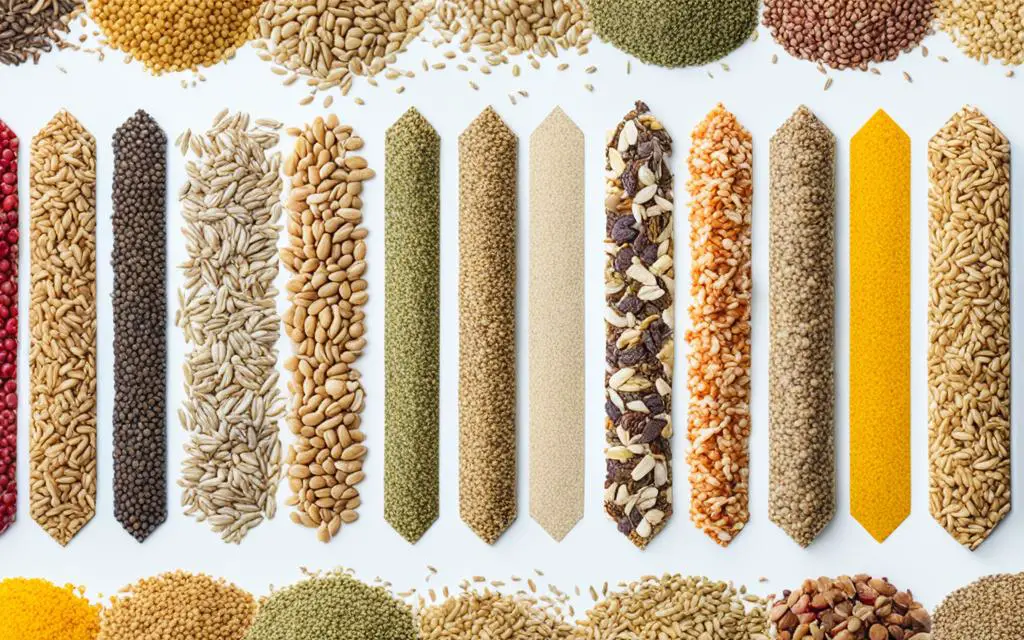
Comments are closed